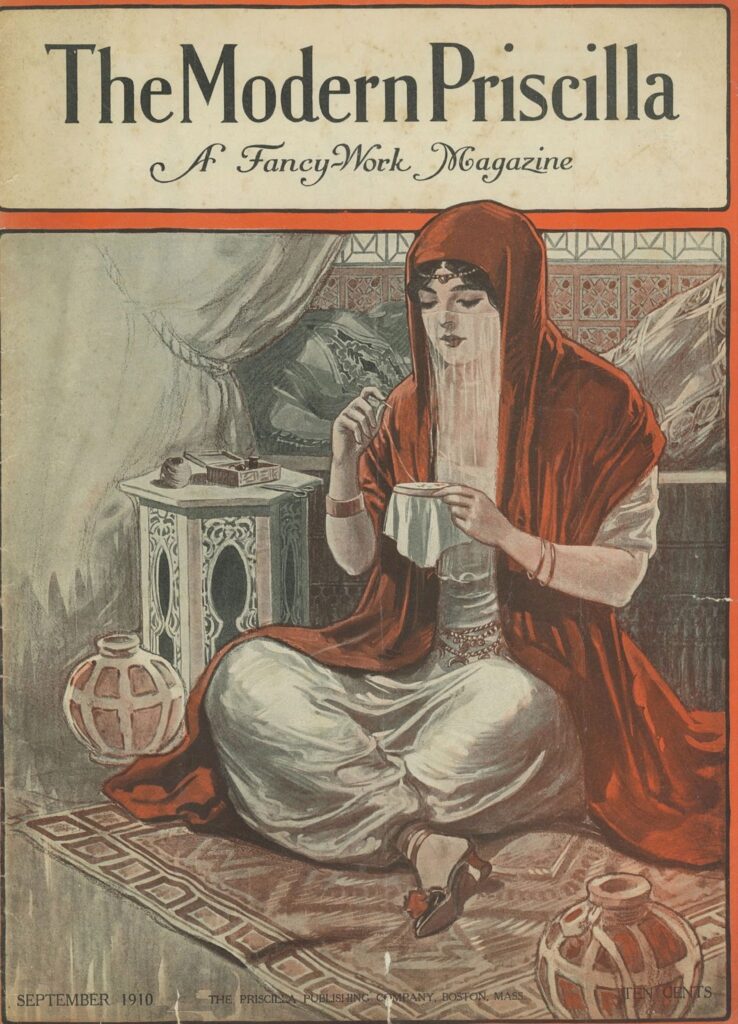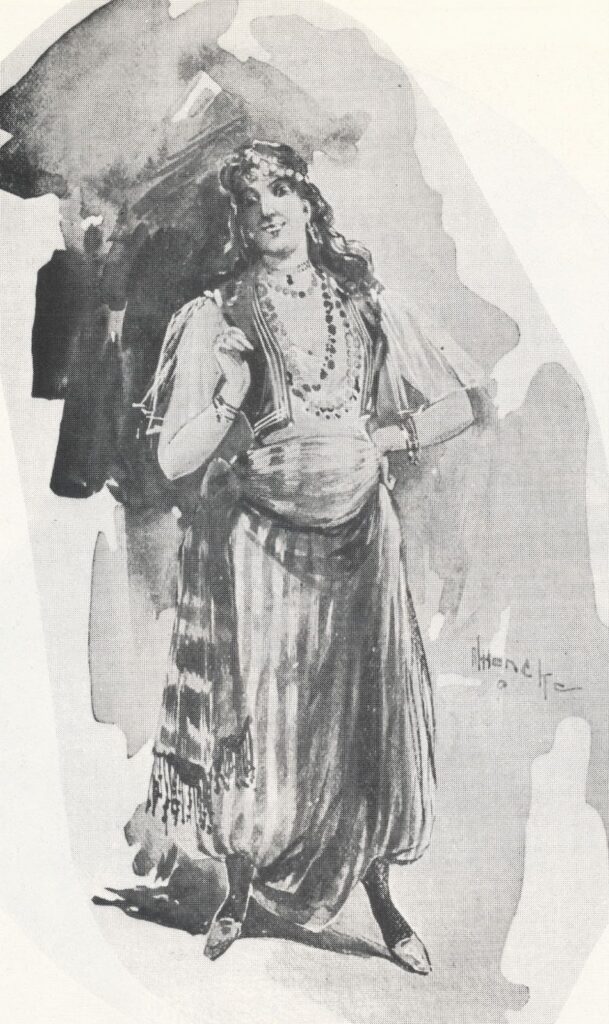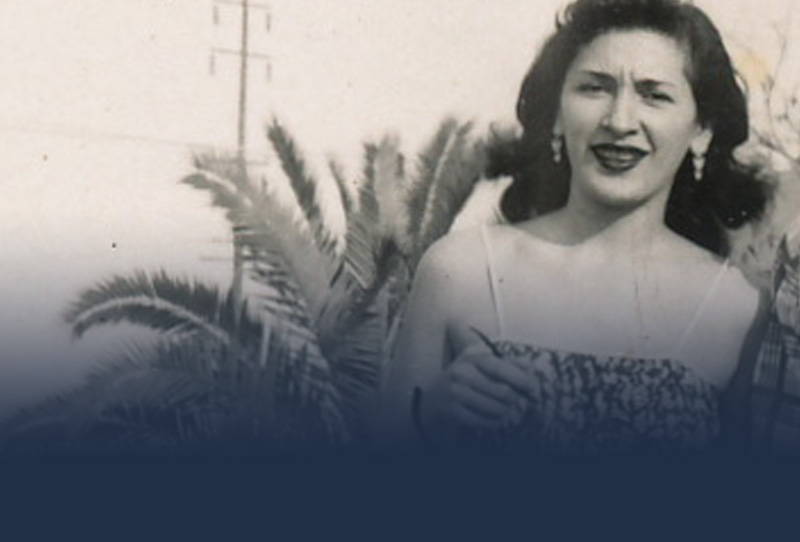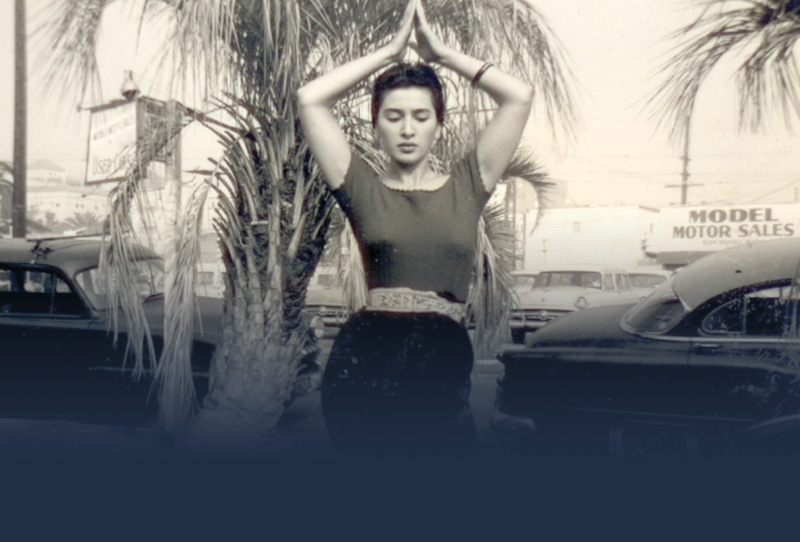Habibi: Vol. 2, No. 2 (1975)
In 1945, survival was the daily topic at the dinner table of the Takorian family. The boys had been discharged from the army; the next plan was to seek out work at something in regular demand. After much speculation and discussion, it was settled that Aram should apprentice his Uncle Wahan as a tile setter, Tiratad obtained an apprenticeship to an engraver, and Anahid was a jeweler.
Hyganoosh was an excellent hostess, and no company ever came that wasn’t well-fed. When word got around the Armenian grapevine, we had lots of company. Since Hyganoosh loved music, she encouraged those to come who could play musical instruments. One regular was Tommy, a Greek man born in Turkey, who played the qanun. I had never seen that instrument before and, when Tommy came to the house with his strange-shaped carrying case, I knew we were in for a treat. He was also a great storyteller, and I often wondered where to draw the line between fact and fiction. He told us about how, as a boy (1914 or thereabout), he would be sound asleep in his family home in Turkey only to be aroused at two or three in the morning at gunpoint by Turkish soldiers who ordered him to dress and fetch his qanun. They hustled him to the barracks where, according to Tommy, music accompaniment was needed for rousing parties. He inferred that if he didn’t comply, well, he might not have been in Hyganoosh’s living room to tell the tale.
Hyganoosh would serve mezze¹ and Tommy would sing, rest, eat, smoke, and tell stories. Soon, a violinist was added to the picture. I can’t remember too much about him because he wasn’t as colorful as Tommy. We would play 78 rpm records in between live music, and one of my favorites was a Chifte Telli by an Armenian group which was my daily practice piece.
Once a month there was the usual Egyptian movie, and I especially looked forward to watching Tahia Carioca or Samia Gamal. I always stayed for two showings to study their movements intensely. When I got home I would dance to the delight and approval of Hyganoosh. Oh, how difficult it was to analyze their movements. How fast the dance sequences went! Now the abdomen, now the pelvis—how graceful the arms and hands. And oh, the music… too short! Maybe a longer dance sequence next time. Next time an observation: there is somewhat of a pattern! Some of the movements are basic! There are just so many repetitions and then she changes her step! When the music is fast she dances fast and when the music is slow her movements are sinuous and elastic! After one year of Egyptian movies and home music concerts, I was still enthusiastic about dancing. It was about this time that Hyganoosh suggested I take up dancing seriously, practicing after work with Tommy and the violinist accompanying me.


About once a week we would get together, and I would improvise on what I saw in the Egyptian movies. When I think back now, it is hard to imagine how anyone at that time went about becoming a dancer. There was no one in California who danced professionally or who had ever even “been” a professional. There were no Middle Eastern clubs, no belly dancing jobs, no belly dancing schools, no belly dancing anything. In fact, I never heard the term “belly dancing” in the Takorian household; the dance was simply called “oriental” dance, and anyone who performed it was an “oriental” dancer. Hyganoosh decided to give me an oriental name, and she decided with enthusiasm that it would be “Morocco”. I knew it was the name of a North African country, and I wasn’t too sure if I liked having the name of a country. You know, it would be like someone announcing to you, “and now we present our oriental dancer, Chicago”…or something like that. I gently presented my case to her, and she gently convinced me that it was suitably “exotic” and so, enter “Morocco”. Hyganoosh made my first costume which was yards and yards of red chiffon for the skirt. She didn’t know what to do with the bra except that it should be fancy, so I took it to a store that made brassieres. After much discussion, they simply gathered the chiffon fabric onto the bra cup so that the effect was that of the inside of a coffin. Oh, well, we all have to start somewhere.
It began to be known through the oriental grapevine that I would be available to dance at whatever functions would come up where they could at least pay musicians, and I would dance for tips (which was the custom). There was no rush on requests to dance, so I practiced for my public debut for Hyganoosh and a few select friends (some of her friends would not have approved). Once or twice I imposed on the “Kufte-Josh”, a monthly potluck dinner for the benefit of the Armenian old-aged home in Los Angeles. The conventional, aging Armenian residents were not exactly stimulated or responsive to my youthful spirit, and so I did not continue to dance there. I was told that they thought at first I was an Armenian girl and were shocked at “one of theirs” performing publicly. Anyway, by the time they were told I was not this and I was not that, I didn’t dance there again.
There were more monthly excursions to oriental movies, more months of living room dancing, and desperate attempts to teach myself finger cymbals. Tahia Carioca and Samia Gamal did not play finger cymbals, nor did they ever get on the floor. Every now and then an unknown unnamed dancer would appear on the screen at a wedding or festival and sometimes, not always, she would play cymbals. Nobody, including Hyganoosh, knew how to play them. I managed to buy a set at a downtown music store and proceeded to teach myself to play. A more illogical pattern you couldn’t imagine: left-left-right-right-right, left-left-right-right-right. Ugh! And try to dance at the same time? Impossible.
This article was published in Jamila’s Article Book: Selections of Jamila Salimpour’s Articles Published in Habibi Magazine, 1974-1988, published by Suhaila International in 2013. This Article Book excerpt is an edited version of what originally appeared in Habibi: Vol. 2, No. 2 (1975).
¹ An Arabic term for appetizers.
Photo Credits
- “The Modern Priscilla” cover, The Priscilla Publisher, February 1910, Public Domain.
- Algerian Dancer, Painting, 1893, Hencke, Public Domain.



